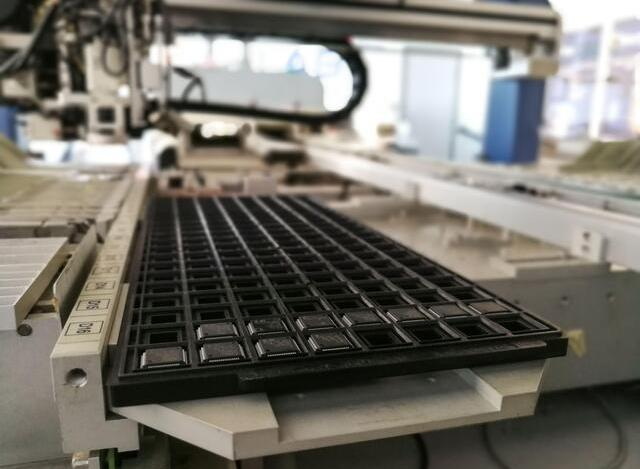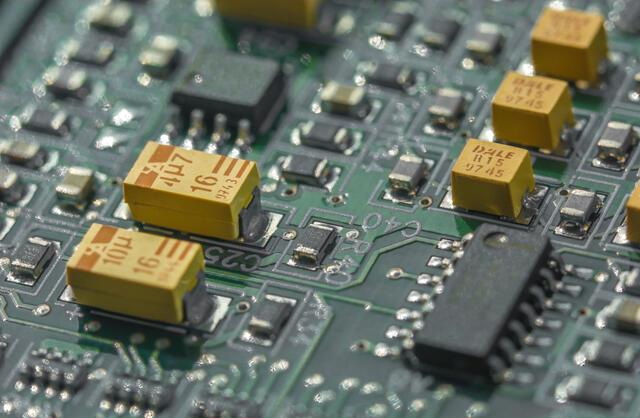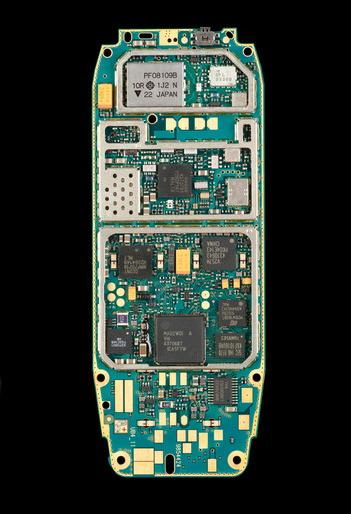Content Menu
● Introduction
● What is Surface Mount Technology (SMT)?
>> Key Features of SMT
● Components of an SMT Line
>> 1. Stencil Printer
>> 2. Pick-and-Place Machine
>> 3. Reflow Oven
>> 4. Inspection Systems
>> 5. Conveyor System
● The SMT Assembly Process
>> 1. Preparation
>> 2. Solder Paste Application
>> 3. Component Placement
>> 4. Reflow Soldering
>> 5. Inspection
>> 6. Final Testing
● Benefits of SMT Lines
● Challenges in SMT Lines
● Common Problems in SMT Assembly
● Future Trends in SMT Technology
● Conclusion
● FAQ
>> 1. What types of components can be assembled using an SMT line?
>> 2. How does an AOI system work?
>> 3. What is reflow soldering?
>> 4. Why is surface mount technology preferred over through-hole technology?
>> 5. What safety measures should be taken when operating an SMT line?
● Citations:
Introduction
In the realm of electronics manufacturing, the term "SMT line" refers to a Surface Mount Technology (SMT) production line. This technology has revolutionized the way electronic components are assembled onto printed circuit boards (PCBs). With the increasing complexity of electronic devices and the demand for higher efficiency, understanding SMT lines becomes essential for manufacturers, engineers, and anyone involved in electronics production.
This article will explore what an SMT line is, its components, processes, benefits, challenges, and future trends. By the end of this comprehensive guide, you will have a clear understanding of SMT lines and their significance in modern electronics manufacturing.

What is Surface Mount Technology (SMT)?
Surface Mount Technology is a method used to mount electronic components directly onto the surface of PCBs. Unlike traditional through-hole technology, where components are inserted into holes drilled in the PCB, SMT allows for a more compact design and greater efficiency in assembly.
Key Features of SMT
- Compact Design: SMT components are smaller than their through-hole counterparts, allowing for more efficient use of space on the PCB.
- Automated Assembly: SMT is highly compatible with automated assembly processes, reducing labor costs and increasing production speed.
- Improved Performance: The shorter electrical paths associated with SMT can lead to improved performance and reduced signal interference.
Components of an SMT Line
An SMT line consists of several key components that work together to facilitate the assembly process. These components include:
1. Stencil Printer
The stencil printer applies solder paste to the PCB. A stencil with openings corresponding to the component pads is used to ensure precise application of solder paste.
2. Pick-and-Place Machine
This machine places surface mount components onto the solder paste-coated PCB. It uses a vision system to identify component placement accurately.
3. Reflow Oven
After components are placed, the PCB enters the reflow oven, where it is heated to melt the solder paste. This process creates strong electrical connections between the components and the PCB.
4. Inspection Systems
Post-assembly inspection is critical for quality control. Automated Optical Inspection (AOI) systems check for defects such as misaligned components or insufficient solder.
5. Conveyor System
A conveyor system transports PCBs between different stages of the assembly process, ensuring a smooth workflow and minimizing handling time.
The SMT Assembly Process
The SMT assembly process can be broken down into several stages:
1. Preparation
Before assembly begins, PCBs must be prepared by cleaning and applying solder mask layers to prevent solder bridging.
2. Solder Paste Application
Using a stencil printer, solder paste is applied to designated areas on the PCB where components will be placed.
3. Component Placement
The pick-and-place machine accurately positions surface mount components onto the solder paste-covered pads.
4. Reflow Soldering
The assembled PCBs are passed through a reflow oven where they are heated to a specific temperature profile that melts the solder paste and creates strong joints.
5. Inspection
After reflow soldering, AOI systems inspect each board for defects. Any faulty boards may undergo manual inspection or rework.
6. Final Testing
Once inspected, boards are subjected to functional testing to ensure they operate as intended before being packaged for shipment.

Benefits of SMT Lines
SMT lines offer numerous advantages over traditional assembly methods:
- Higher Component Density: The compact nature of SMT allows for more components on a single board, which is crucial in modern electronics where space is at a premium.
- Reduced Production Costs: Automation in SMT lines reduces labor costs and increases throughput.
- Improved Reliability: The strong solder joints created during reflow soldering enhance overall reliability and performance.
- Flexibility: SMT lines can easily adapt to different product designs and production volumes without significant reconfiguration.
- Environmental Benefits: With lead-free soldering options available, SMT lines can help manufacturers comply with environmental regulations while improving sustainability practices[1][2].
Challenges in SMT Lines
Despite their advantages, SMT lines also face challenges:
- Complexity: The equipment used in SMT lines can be complex and requires skilled operators for setup and maintenance.
- Defects: Issues such as tombstoning (where one end of a component lifts off the board) or insufficient solder can occur if not carefully monitored during production[5].
- Cost of Equipment: Initial investment in high-quality SMT equipment can be substantial, posing a barrier for smaller manufacturers[6].
Common Problems in SMT Assembly
As with any manufacturing process, there are common problems that can arise during SMT assembly:
- Solder Bridging: This occurs when excess solder connects two or more pads unintentionally, leading to electrical shorts. Proper stencil design and paste application techniques can mitigate this issue[5].
- Insufficient Solder Joints: Insufficient solder can lead to open circuits where connections fail. This often results from inadequate solder paste application or component placement errors[5].
- Tombstoning: A defect where one end of a component lifts off the pad during reflow due to uneven heating or improper paste application[5].
- Non-Wetting Issues: This occurs when solder fails to adhere properly to either the pad or component leads due to contamination or poor surface finish on PCBs[5].
Addressing these issues requires careful monitoring throughout the assembly process and implementing best practices in both design and execution phases.
Future Trends in SMT Technology
As technology advances, so does Surface Mount Technology. Here are some trends shaping its future:
- Miniaturization: As electronic devices continue to shrink, there is a growing need for even smaller components and tighter spacing on PCBs[1][6].
- Smart Manufacturing: The integration of IoT devices into manufacturing processes allows for real-time monitoring and optimization of production lines[3].
- Sustainability Practices: There is an increasing focus on environmentally friendly practices within electronics manufacturing, including lead-free soldering techniques and waste reduction strategies[3][7].
- Automation and Robotics Integration: Full-auto SMT lines utilizing robotic arms for precise component placement are becoming more prevalent, boosting productivity while reducing human error[3][8].
- Artificial Intelligence (AI): AI technologies are being integrated into SMT processes for predictive maintenance, quality control, and process optimization[3]. These advancements enable manufacturers to analyze data in real-time to improve efficiency continuously.
Conclusion
In summary, an SMT line plays a crucial role in modern electronics manufacturing by enabling efficient assembly of compact electronic devices. Understanding its components, processes, benefits, challenges, and future trends can help stakeholders make informed decisions regarding their manufacturing strategies. As technology continues to evolve, so too will the capabilities of SMT lines, paving the way for even greater advancements in electronic device design and production efficiency.

FAQ
1. What types of components can be assembled using an SMT line?
SMT lines can handle various types of components including resistors, capacitors, integrated circuits (ICs), diodes, and connectors among others.
2. How does an AOI system work?
Automated Optical Inspection (AOI) systems use cameras to capture images of assembled PCBs and compare them against predefined standards to detect defects such as misalignment or missing components.
3. What is reflow soldering?
Reflow soldering is a process where solder paste applied to a PCB is melted using heat from an oven or other heating methods to create permanent electrical connections between surface mount components and pads on the PCB.
4. Why is surface mount technology preferred over through-hole technology?
Surface mount technology is preferred due to its ability to support higher component densities, reduce overall board size, improve performance due to shorter electrical paths, and facilitate automated assembly processes which lower production costs.
5. What safety measures should be taken when operating an SMT line?
Safety measures include proper training for operators on equipment use, regular maintenance checks on machinery to prevent malfunctions, adherence to safety protocols regarding handling chemicals like solder paste, and ensuring proper ventilation in work areas.
Citations:
[1] https://www.raypcb.com/surface-mount-technology/
[2] https://vectorbluehub.com/smt-assembly
[3] https://www.smtfactory.com/Future-Trends-in-SMT-Lines-Innovations-Shaping-The-Electronics-Manufacturing-Industry-id44863586.html
[4] https://www.wevolver.com/article/smt-process
[5] https://jhdpcb.com/blog/efficient-smt-assembly/
[6] https://www.unmannedsystemstechnology.com/feature/mpl-explains-the-evolution-of-smt-technology/
[7] https://www.mpe-electronics.co.uk/2024/10/22/advantages-and-disadvantages-of-surface-mount-technology
[8] https://smt.fuji.co.jp/en/topics/2858
[9] https://minearc.com/what-is-an-smt-line/
[10] https://www.adspcba.com/advancements-in-smt-surface-mount-technology-for-efficient-processing/




















